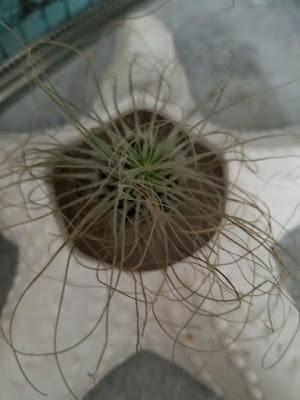• Birmingham Farmers Market: 9 a.m.-2 p.m. Sundays May 6-Oct. 28 at Public Parking Lot 6, 660 North Old Woodward, Birmingham, www.BirminghamFarmersMarket.org.
• Clarkston Farmers Market: 9 a.m.-1 p.m., Saturdays June 9 to Oct. 13 in the front parking lot at Clarkston Community Education, 6558 Waldon Road, Clarkston, 248-821-4769, clarkstonareafarmersmarket.com.
• Clawson Farmers Market: 9 a.m.-1 p.m. Sundays, May 20-Sept. 23, at Clawson City Park 1080 N. Custer Ave., Clawson, 248-435-6500, www.cityofclawson.com.
• Farmington Farmers and Artisans Market: 9 a.m.-2 p.m. Saturdays, May 19-Oct. 27 at Walter E. Sundquist Pavilion in George F. Riley Park, 33113 Grand River Ave. at Grove St., 248-473-7276, ext. 13, www.farmingtonfarmersmarket.com.
• Beaumont Hospital, Farmington Hills Farmers Market is 9:30-11 a.m., Wednesday’s through September at 28050 Grand River Ave., Farmington Hills, www.beaumont.org.
• Franklin Farmers Market on the Green: 11 a.m.-3 p.m. Sundays, June 3- Oct. 28 at Franklin Community Park, 32325 Franklin Road, Franklin, 248-672-4565.
• Hazel Park Growers and Makers Market: 10 a.m.-2 p.m. Sundays, July 8-Oct. 14 at Green Acres Park near the city’s recreation and community centers at 620 Woodward Heights, SNAP/Bridge Cards, www.facebook.com/hazelparkgrowersandmakersmarket.
• Lathrup Village Farmers Market: 3:30-7 p.m., May 16 to October at 27400 Southfield Road, Lathrup Village, 248-557-2600 ext. 224, www.lathrupvillage.org, WIC, SNAP/Bridge Cards.
• Milford Farmers Market: Thursdays May 10-Oct. 11; 3-7 p.m. May, September and October; 3-8 p.m. June-August, at East Liberty Street between South Main and Union streets in downtown Milford, fresh produce, live music, family activities, milfordfarmersmarket.org, SNAP, Bridge Cards.
• MSU Tollgate Farmers Market: 4:30-6:30 p.m. Wednesdays, May 30 throughout season, at MSU Tollgate Farm and Education Center, 28115 Meadowbrook Road, Novi, 248-347-0269 x229, www.canr.msu.edu/tollgate.
• Fogler’s Orchard & Farm Market: 10 a.m. to 7 p.m. daily at 3979 Rochester Road, near Gunn Road, Oakland Township, 248-652-3614, foglersgreenhouse.com, seasonal produce.
• Oakland County Farmers Market: 7 a.m.-1:30 p.m. Tuesdays, Thursdays and Saturdays, May to December at 2350 Pontiac Lake Road, Waterford Township, 248-858-5495, www.oakgov.com/parks/parksandtrails/farmers-market/Pages/default.aspx, WIC, SNAP, Bridge Cards.
• Rochester Farmers Market, East Third and Water Street, Rochester: 8 a.m.-1 p.m. Saturdays, May 5 - Oct. 27, 248-656-0060, www.downtownrochestermi.com, Bridge Cards accepted.
• Royal Oak Farmers Market: 7 a.m.-1 p.m. Fridays, May to December and Saturdays, year-round at 316 E. 11 Mile, open 248-246-3276, www.romi.gov/389/Farmers-Market.
• Beaumont Health & Wellness Center, Coolidge, Onsite Farm Stand is 3-5 p.m. Thursdays through Sept. 28 at 4949 Coolidge Hwy., Royal Oak, www.beaumont.org.
• Beaumont Hospital, Royal Oak Farmers Market is 8 a.m.-2 p.m. Thursdays through Oct. 4 at South Tower Pavilion, 3601 W. 13 Mile Road, Royal Oak, ,www.beaumont.org.
• South Lyon Farmers Market: 9 a.m. to 2 p.m. Saturdays May 5 to Oct. 27 at Pontiac Trail and Liberty Street, downtown South Lyon, 248-437-1735, www.southlyonfarmersmarket.org.
• Troy Farmers Market: 3-7 p.m. Fridays, June 1- Oct. 26 at the Troy Public Library Parking Lot off Big Beaver & Civic Center Roads, fresh and seasonal, local Michigan grown fruits and vegetables, flowers and products, food trucks, musical entertainment and children’s activities, 248-524-1147, www.troymi.gov/farmersmarket.
• Farmers Market at Beaumont Hospital, Troy is 3:30 - 5 p.m., Tuesdays through September at 44201 Dequindre Road, Troy, www.beaumont.org.
• Walled Lake’s Park & Recreation Commission Farmers Market: 7 a.m.-1 p.m. Wednesdays May to October at the Walled Lake City Event Field, 1499 E. West Maple Road Walled Lake, 248-624-4847, www.walledlake.com.
• Henry’s Market on Main at Henry Ford West Bloomfield Hospital: 9 a.m. – 5 p.m., Wednesdays, June 6 to mid-November at 6777 W. Maple Road, in West Bloomfield, 248-325-2060. Fresh produce, baked goods, flowers, seedlings and products such as pesto and salsa, made in Henry’s, the hospital’s café. Henry Ford West Bloomfield chefs will share recipes and free samples of dishes using ingredients grown in the hospital’s greenhouse. The market accepts cash, credit card, S.N.A.P., Project Fresh, www.henryford.com/locations/west-bloomfield/campus/main-street/henrys-market.








